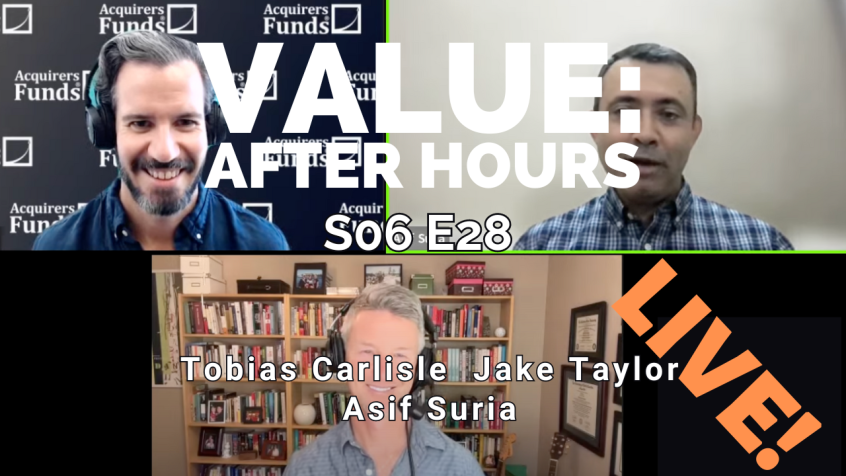During their recent episode, Taylor, Carlisle, and Asif Suria discussed Mastering Event-Driven Investing, here’s an excerpt from the episode:
Asif: Yes. Event driven investing or special situations investing is about acting on maybe a corporate action. It could be one company acquiring another one, like Microsoft acquired Activision Blizzard. And that created a situation where the stock that’s being acquired doesn’t often end up trading at the acquisition price. There’s usually a discount to that acquisition price for various reasons. And so, that strategy of buying the stock of the company being acquired, waiting for the deal to close, is called merger arbitrage. So, that’s one of six situations that I’m discussing in the book.
Spin offs are the other common one that most people know about. So, companies go through this process of acquiring companies, then they figure out that it’s not a good fit, or maybe they have a division that’s doing very well and they want to get rid of it. And in some cases, it’s getting rid of it, because there are bad assets within the division. Sometimes they just want to motivate the management team of that division to go build on their own, like McDonald’s did with Chipotle way back when, or Fiat Chrysler did with Ferrari. And so, that’s the spin off strategy. So, those are two of the primary strategies most people focus on.
I also included insider transactions, where company insiders are buying and selling their own stock. It’s not traditionally considered an event-driven strategy, but it’s something that I’ve followed for a really long time, because in some sense, it’s related to a corporate action. I included that as an event-driven strategy. SPACs, management changes and stock buybacks by the company, those are the other three strategies that I’ve discussed in a book.
Tobias: The SPAC, it’s de-SPACing or the SPAC acquisition, or what’s the best way to play SPACs?
Asif: So, you used to get a couple of different ways of approaching it. So, you could buy the SPAC IPO after it’s announced, and you wait for them to announce a transaction with an operating company. So, you have the de-SPAC process. People used to buy the IPO, wait for the units to split into the stock and warrants. When it came time to make a decision about whether they wanted to stick with the combined company, they would usually sell the stock for the $10 a share that they paid for it and keep the warrants for free. So, if you had a runaway hit or a runaway success, you essentially are betting for free on that with the warrants.
There’s a little bit of downside there where the companies are very smart as well. If they think that things are going very well, they might buy back the warrants. So, you don’t necessarily have all that runway. But the other side of SPACs is actually quite interesting. So, as you guys know, two or three years ago, we had this big SPAC boom. Everybody is trying to go public through a SPAC. You had all these science projects that shouldn’t have been a public company that decided to go public. Sure enough, after the de-SPAC, those stocks felt like a rock. And so, they provided ample opportunities on the short side if you were so inclined to short companies.
You can find out more about the VALUE: After Hours Podcast here – VALUE: After Hours Podcast. You can also listen to the podcast on your favorite podcast platforms here:
For all the latest news and podcasts, join our free newsletter here.
Don’t forget to check out our FREE Large Cap 1000 – Stock Screener, here at The Acquirer’s Multiple:



